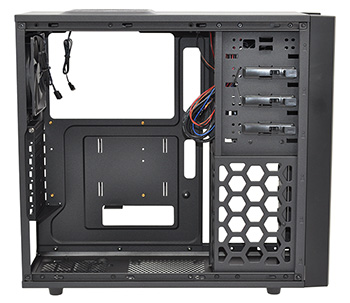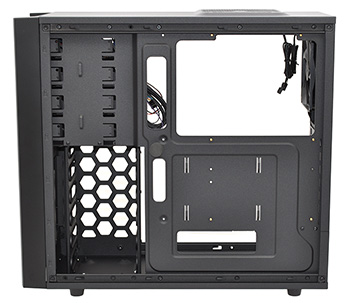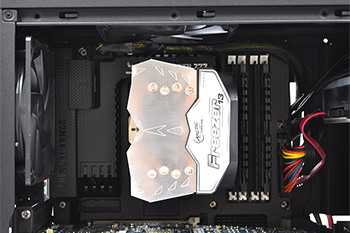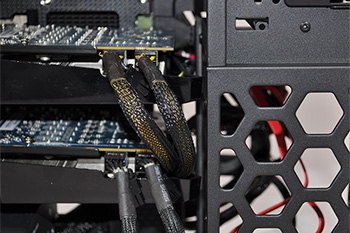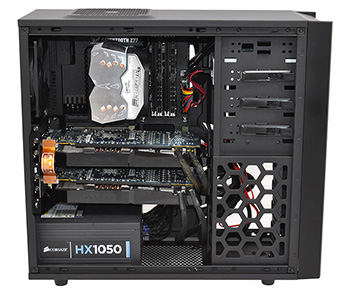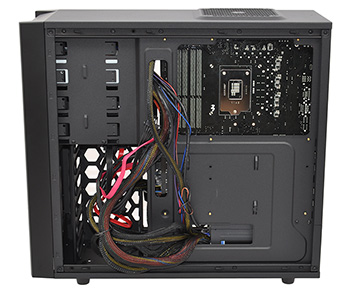Inside the One
£40 will buy you a fair amount of chassis going by these pictures, and Antec's feature set is quite reasonable. All three optical bays are designed to function tool-free, rails are supplied for the back-loading hard-disk bays - all of which are stacked in their own honeycomb column - and SSDs are catered for in a simple but effective manner; you can screw one in at the base of the column, and another can be attached up top.
The motherboard area is just about big enough for an ATX board, and forget about small cutouts for CPU cooler installation, Antec's decided to do away with a massive portion of the tray. The rest of the base stays rigid enough, despite the massive gap, and there are trio of dedicated cable-routing holes. These can be partially obstructed by full-size boards and aren't rubber-grommeted, but there's enough space to keep cables tied up and out of direct view.
Antec plays it safe with the internal layout - there's nothing particularly unusual here - but the One's compact size does leave it feeling constrained in parts, and certain cost-cutting elements do prove to be a nuisance. The most obvious example is Antec's decision not to include detachable covers for all seven expansion slots. Only one is covered with a removable bracket, and the other six are breakout strips of steel that can't be re-used. That could be a problem further down the line - you won't be able to cover up slots once you've broken-out the steel - and the thinness of the material poses another challenge; try to remove a strip with too much force and you'll end up warping the bits that are designed to stay in place.
Although officially a mid-tower solution, the One isn't the roomiest of cases and squeezing in our high-end Intel Ivy Bridge test platform revealed a few potential obstacles. Our ASUS Sabertooth board has a CPU power connector positioned along the top edge, where it almost fouls the chassis' 120mm top exhaust. We had to remove the fan in order to plug in the eight-pin cable, but with a bit of manoeuvring we were able to get the fan back into place after the cable was attached. The process isn't helped by the fact that there isn't an up-and-over cable-routing hole to take wiring over the back of the motherboard.
You'll need to be wary of graphics-card clearance, too. Our two Sapphire Radeon HD 7950 OC graphics cards do fit in, but only just; there's not a centimetre to spare.
Despite these minor niggles, the Antec One accommodates our high-end test platform quite well. It's admittedly disproportional - we've got a £170 processor, a £180 motherboard, a £70 SSD and around £500 of graphics in a £40 chassis - but it proves that the One will happily house a high-end build.
One thing to be careful of is cable management. While there are routing opportunities, there's very little room between the motherboard tray and the side panel, so you may find the need to stuff cables into the hard-disk column. The bulge in the side panel helps somewhat, but the use of thin steel doesn't; if your cables aren't tidy, you can expect the side panel to bend at the edges as you try to squeeze it on.
So far so good. The One has beaten our expectations in that it looks pleasant enough and it's quite easy to work with, but how well can it perform?






